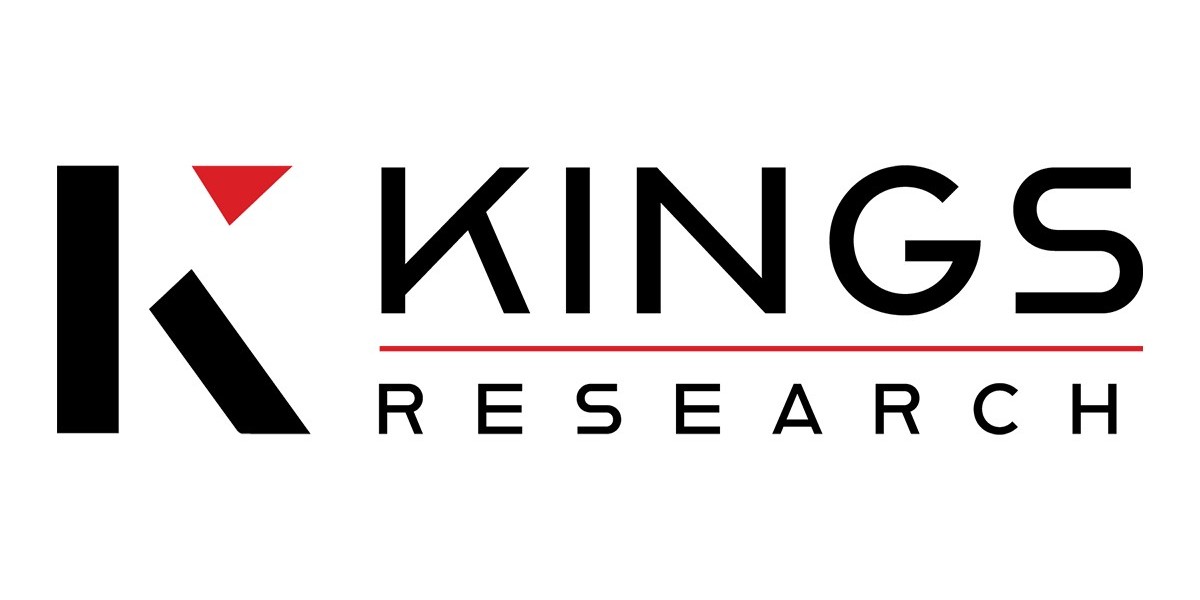The global synthetic diamond market, valued at USD 19.50 billion in 2023, is expected to reach USD 28.66 billion by 2031, growing at a CAGR of 5.01% from 2024 to 2031. This growth is driven by increasing demand across industries such as electronics, construction, and jewelry, along with advancements in production technologies and a rising focus on sustainable, ethical alternatives to natural diamonds.
The global synthetic diamond market has seen significant growth in recent years, driven by increasing demand across diverse sectors, technological advancements, and the expanding utility of synthetic diamonds in industrial applications. According to data from King’s Research, the synthetic diamond market is poised for continued growth, supported by trends in innovation, a growing emphasis on sustainability, and the increasing acceptance of synthetic diamonds in luxury goods. This report delves into the market growth, trends, demand dynamics, segmentation, key players, and regional analysis of the synthetic diamond market.
Market Growth
Synthetic diamonds, also known as lab-grown or cultured diamonds, are increasingly seen as viable alternatives to natural diamonds. These diamonds are grown using advanced technological processes that replicate the natural conditions under which diamonds are formed, resulting in products that are physically, chemically, and optically identical to mined diamonds. This ability to produce high-quality diamonds at a lower environmental and ethical cost has sparked substantial interest across various industries, from jewelry to electronics and construction.
Market Trends
One of the key trends in the synthetic diamond market is the growing focus on sustainability. As consumers and industries become more environmentally conscious, the demand for eco-friendly and ethically produced diamonds is rising. Synthetic diamonds, produced in controlled environments with minimal environmental impact, have emerged as a sustainable alternative to mined diamonds. This shift is particularly evident in the jewelry industry, where customers are increasingly opting for lab-grown diamonds over natural ones due to their lower environmental footprint and absence of conflict-related issues.
Technological advancements are another significant trend shaping the market. The development of new manufacturing processes, such as Chemical Vapor Deposition (CVD) and High-Pressure High-Temperature (HPHT) methods, has improved the efficiency and quality of synthetic diamond production. These advancements have enabled manufacturers to produce diamonds with better clarity, size, and color consistency, making them more attractive to both industrial and consumer markets.
In addition, synthetic diamonds are gaining popularity in high-tech applications. In the electronics industry, diamonds' excellent thermal conductivity and electrical insulating properties make them ideal for use in semiconductors and other advanced technologies. The growing demand for synthetic diamonds in electronics and optics is expected to be a key driver of market growth in the coming years.
Unlock Key Growth Opportunities: https://www.kingsresearch.com/synthetic-diamond-market-535
Market Demand and Dynamics
The demand for synthetic diamonds is driven by a variety of factors, including their lower cost compared to natural diamonds, increasing awareness of environmental and ethical issues, and expanding industrial applications. In the jewelry industry, synthetic diamonds are becoming a popular choice among consumers seeking affordable, high-quality, and ethically sourced gemstones. This shift in consumer preference is expected to continue, with synthetic diamonds projected to account for a growing share of the global diamond jewelry market.
On the industrial side, synthetic diamonds are essential in various applications such as cutting, grinding, drilling, and polishing due to their extreme hardness and durability. These properties make synthetic diamonds indispensable in industries like construction, mining, and manufacturing, where they are used in tools and machinery for precision cutting and machining. The expanding scope of industrial applications is a key factor contributing to the rising demand for synthetic diamonds.
Furthermore, the electronics and semiconductor industries are emerging as significant consumers of synthetic diamonds. The unique thermal and electrical properties of diamonds make them ideal for use in high-performance electronics, such as heat sinks, semiconductors, and optical components. As the demand for advanced electronics continues to grow, particularly in emerging technologies such as 5G, electric vehicles, and quantum computing, the demand for synthetic diamonds is expected to increase.
Another dynamic influencing the market is the increasing competition among synthetic diamond manufacturers. With advancements in production technologies and the entry of new players into the market, the competition has intensified, leading to improvements in product quality and reductions in production costs. This increased competition is expected to drive further innovation and cost reductions, making synthetic diamonds more accessible to a wider range of industries and consumers.
Market Segmentation
The synthetic diamond market can be segmented based on type, manufacturing process, application, and region.
In terms of type, the market is divided into polished and rough synthetic diamonds. Polished diamonds, primarily used in jewelry, are expected to witness significant growth due to increasing consumer preference for sustainable and ethical gemstones. On the other hand, rough synthetic diamonds, which are used in industrial applications, are also anticipated to grow at a steady pace due to their wide range of applications in cutting, grinding, drilling, and other industrial processes.
Based on the manufacturing process, the market is segmented into High-Pressure High-Temperature (HPHT) and Chemical Vapor Deposition (CVD). The CVD segment is expected to dominate the market due to its ability to produce high-quality diamonds with better control over size, shape, and clarity. The HPHT method, however, remains widely used for industrial applications due to its cost-effectiveness in producing rough diamonds.
In terms of application, the market is categorized into jewelry, electronics, construction, healthcare, and others. The jewelry segment is expected to hold a significant share of the market, driven by the increasing consumer demand for affordable, ethical, and high-quality diamonds. The electronics segment is also anticipated to experience rapid growth, fueled by the rising use of synthetic diamonds in semiconductors, heat sinks, and other high-performance electronics. The healthcare sector is another emerging application area, with synthetic diamonds being used in medical devices and diagnostic equipment.
Key Companies in Synthetic Diamond Market
- MiaDonna & Co.
- Labrilliante
- Lab Grown Solitaire Diamond
- Craft Lab Grown Diamonds
- Grown Diamond Corporation
- Finegrowndiamonds.com
- De Beers Group (Lightbox Jewelry)
- BHANDERI LAB GROWN DIAMONDS
- ABD Diamonds
- CVD Diamond Inc
Key Industry Development
- November 2023 (Collaboration) - Lightbox, a jewelry brand that specializes in lab-grown diamonds and is owned by De Beers, entered into two new collaborations focused on design. These partnerships aim to broaden the range of fashionable jewelry options offered by Lightbox. The first partnership is with Roseate, a sustainable fine jewelry brand that centers around pearls. The second collaboration, which has not been officially announced yet, is with The Future Rocks, an online global brand that specializes in lab-grown jewelry.
The global Synthetic Diamond Market is segmented as:
By Type
- Rough
- Polished
By Technique
- High-Pressure or High-Temperature
- Chemical Vapor Decomposition
By Nature
- Colored
- Colorless
By Distribution Channel
- Online
- Offline
By Application
- Jewelry
- Electronics
- Construction
- Others
By Region
- North America
- U.S.
- Canada
- Mexico
- Europe
- France
- UK
- Spain
- Germany
- Italy
- Russia
- Rest of Europe
- Asia Pacific
- China
- Japan
- India
- South Korea
- Rest of Asia Pacific
- Middle East & Africa
- GCC
- North Africa
- South Africa
- Rest of the Middle East & Africa
- Latin America
- Brazil
- Argentina
- Rest of Latin America
These key players are continuously investing in research and development to improve the quality of synthetic diamonds and expand their applications in various industries. Strategic collaborations, partnerships, and mergers are common strategies used by these companies to strengthen their market position and enhance their product offerings.
Regional Analysis
The synthetic diamond market exhibits strong growth potential across various regions, with Asia-Pacific, North America, and Europe emerging as key markets.
Asia-Pacific is expected to dominate the synthetic diamond market, driven by the rapid industrialization and expansion of the electronics and construction industries in countries such as China, India, and Japan. China, in particular, is a major producer and consumer of synthetic diamonds, with a strong focus on industrial applications. The growing demand for synthetic diamonds in electronics, healthcare, and jewelry is expected to drive market growth in the region.
North America is another significant market for synthetic diamonds, particularly in the jewelry and electronics sectors. The United States, in particular, has seen a rise in consumer demand for lab-grown diamonds, driven by increasing awareness of environmental and ethical concerns. The growing use of synthetic diamonds in high-tech applications, such as semiconductors and quantum computing, is also contributing to the market's growth in the region.
Europe is experiencing steady growth in the synthetic diamond market, supported by the rising demand for sustainable and ethical jewelry. The region is also witnessing increased adoption of synthetic diamonds in industrial applications, particularly in the automotive and aerospace industries.
Other regions, including Latin America and the Middle East & Africa, are expected to witness moderate growth, driven by the expanding industrial and construction sectors. However, these regions are still in the early stages of adopting synthetic diamonds, and their market potential remains largely untapped.
Conclusion
The synthetic diamond market is poised for substantial growth, driven by increasing demand across multiple sectors, technological advancements, and a growing emphasis on sustainability and ethical sourcing. The jewelry industry, in particular, is witnessing a significant shift towards lab-grown diamonds as consumers seek affordable, high-quality, and environmentally friendly alternatives to mined diamonds. At the same time, the industrial and electronics sectors are expanding their use of synthetic diamonds in cutting-edge applications, from advanced manufacturing to high-performance electronics.
As key players in the market continue to innovate and expand their product offerings, the synthetic diamond market is expected to experience continued growth and diversification. With its wide range of applications and increasing consumer acceptance, synthetic diamonds are well-positioned to become a key component of the global economy in the years to come. The market's future looks bright, with opportunities for growth across regions and industries, making it an exciting space to watch in the coming decade.
Browse Related Article:
Japan’s Industrial Tech with AI for Real-Time Defect Detection








